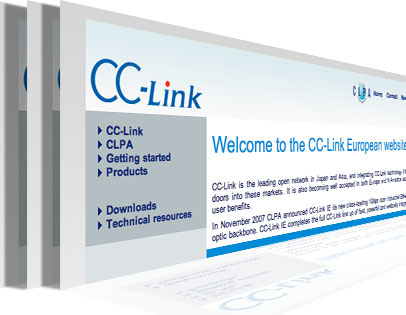A new book on industrial communications is being hailed as one of the best and clearest overviews of a sometimes-bafflingly fast moving technology.
“Industrial Communication with Fieldbus and Ethernet”, published by VDE Verlag in both English and German language versions, provides a concise explanation of the state of the art of data and information handling in manufacturing and production. Aimed at the widest possible audience, including developers, users and students, it presents information simply but thoroughly. The book has been produced in conjunction with leading figures from the fields of academia, industrial communications and market research plus respected commentators on the industry.
John Browett, Acting General Manager of the CC-Link Partners Association, recommends the book: “Like many people, we thought that perhaps the arrival of Industrial Ethernet would replace all the competing fieldbuses with one single technology. But in fact there are as many versions of Industrial Ethernet as there are fieldbuses, so the difficulty of choosing between them remains.
Fortunately, Industrial communication with Fieldbus and Ethernet now offers a good foundation for understanding the underlying technical principles and the strengths and weaknesses of the various options.”
At over 300 pages, the book can appear just as daunting as the technology it is explaining, but happily its structure has been thought through for maximum clarity. The information is mainly presented in short, digestible passages that can be read individually – and reread as necessary.
“The book follows a logical progression, beginning with a look at the market and the main players, trends in automation and international standards, before giving a detailed technical overview of each type of fieldbus,” recalls Browett. “It then repeats the process with the various Ethernet protocols. It finishes up with some other pertinent topics, such as wireless, security and implementation. In summary, it makes a great reference tool that should help engineers to identify the best solutions for any given installation.”
“Engineers need to have a clear view of likely developments 2-5 years ahead,” says Browett “Conversations with control and information specialists focus on medium and long term developments. They want to be confident that any system they install will have sufficient longevity, to ensure that they won’t be replacing it almost immediately. Their other big issue, and it is really the other side of the same coin, is interconnectivity. Will their new system communicate with existing – and yet to be installed – ones elsewhere in the enterprise?”
CLPA is pleased to have been asked to contribute two chapters to the book, covering both the fieldbus and Ethernet versions of CC-Link. This is seen as being further evidence that despite its origins in Asia, CC-Link is increasingly being seen as part of the essential “club” of networks being considered for applications in Europe too.
The book’s thoughtful conclusion is that control engineering is never easy. The Fieldbus Wars of the 1990s, the competing variants of Industrial Ethernets, constantly emerging new technologies, and changing market conditions all add to the complexity of decision making. However Industrial Communication with Fieldbus and Ethernet is a very useful tool for identifying the defining issues.




